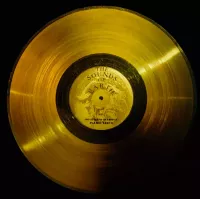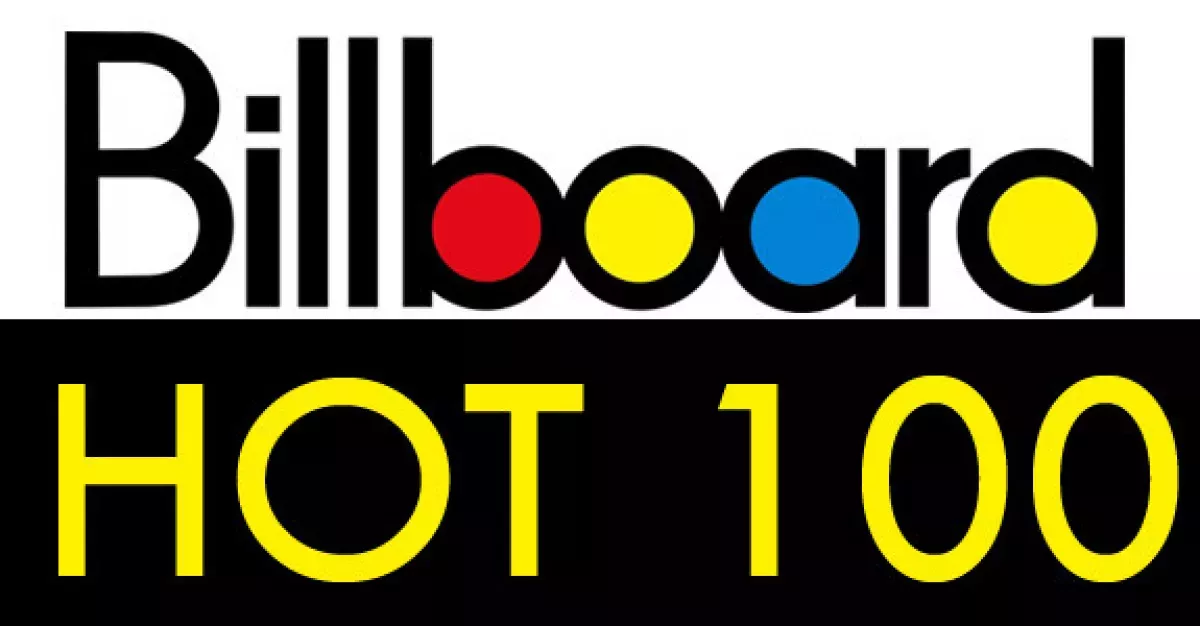The Billboard Hot 100 is the primary music chart in the United States, published weekly by Billboard magazine. It ranks songs based on a combination of sales, online streaming figures, and radio airplay data gathered across the U.S. It serves as the music industry standard for measuring the popularity of songs in the country.
July 1913: Billboard published first chart
In July 1913, Billboard published its first chart, "Last Week's Ten Best Sellers Among the Popular Songs," which was a list of best-selling sheet music.
1928: "Popular Numbers Featured by Famous Singers and Leaders" appeared
In 1928, Billboard introduced "Popular Numbers Featured by Famous Singers and Leaders", a chart that added radio performances to in-person performances.
January 4, 1936: "Ten Best Records for Week Ending" published
On January 4, 1936, Billboard magazine published "Ten Best Records for Week Ending", which listed the top 10 selling records from three leading record companies.
October 1938: "The Week's Best Records" retitled
In October 1938, Billboard's review list, "The Week's Best Records", was retitled "The Billboard Record Buying Guide" by incorporating airplay and sheet music sales to assess record popularity.
July 20, 1940: "Billboard Music Popularity Chart" was created
For the week ending July 20, 1940, Billboard created the full-page "Billboard Music Popularity Chart" with lists covering jukebox play, retail sales, sheet music sales, and radio play.
March 24, 1945: Billboard's lead popularity chart was the Honor Roll of Hits
Starting on March 24, 1945, Billboard's lead popularity chart was the Honor Roll of Hits. This chart ranked the most popular songs regardless of performer based on record and sheet sales, disk jockey, and jukebox performances.
November 12, 1955: Billboard published The Top 100
On November 12, 1955, Billboard published The Top 100 chart for the first time, combining sales, airplay, and jukebox activity. "Love Is a Many-Splendored Thing" by The Four Aces was the first No. 1 song.
1955: Start of the rock era
At the start of the rock era in 1955, Billboard had three charts measuring songs by individual metrics.
June 17, 1957: Most Played in Jukeboxes chart discontinued
On June 17, 1957, Billboard discontinued the Most Played in Jukeboxes chart due to the declining popularity of jukeboxes.
July 28, 1958: Final Most Played by Jockeys and Top 100 charts
The week of July 28, 1958, marked the final publication of the Most Played by Jockeys and Top 100 charts. Perez Prado's instrumental version of "Patricia" topped both charts.
August 4, 1958: "Poor Little Fool" was the first number-one song
On August 4, 1958, "Poor Little Fool" by Ricky Nelson became the first number-one song on the Billboard Hot 100 chart.
October 13, 1958: Billboard discontinued the Best Sellers In Stores chart
On October 13, 1958, Billboard discontinued the Best Sellers In Stores chart after premiering the Hot 100 chart.
1958: A- and-B-sides charted separately
With the initiation of the Hot 100 in 1958, A- and-B-sides of singles were charted separately, as they had been on the former Top 100 chart.
November 29, 1969: Rule altered for listing both sides of a single
Starting with the Hot 100 chart for the week ending November 29, 1969, Billboard altered its rule to list both sides of a single together if they received significant airplay.
1972: Trend of putting the same song on both sides of singles
By 1972, most major record labels had solidified a trend of putting the same song on both sides of the singles provided to radio.
November 30, 1991: Relationship ended with American Top 40
On November 30, 1991, the Hot 100's relationship with the weekly radio countdown show American Top 40 ended, as American Top 40 started using the airplay-only side of the Hot 100.
1991: Nielsen started tracking sales
In 1991, Nielsen began tracking sales data for the Billboard charts. The weekly tracking period was initially Monday–Sunday.
1991: Removed titles reached certain criteria regarding its current rank and number of weeks on the chart
Since 1991, Billboard has removed titles from the Hot 100 that have reached certain criteria regarding their current rank and number of weeks on the chart to allow for new and developing artists and tracks.
1994: Christmas songs
Older songs are allowed to re-enter the Hot 100 provided they chart higher than number 50. Since the relaxation of recurrent rules, Christmas songs have been a regular presence on the Hot 100 each December since 1994
December 5, 1998: Hot 100 changed from a "singles" chart to a "songs" chart
On December 5, 1998, the Hot 100 changed from being a "singles" chart to a "songs" chart, allowing songs not available as singles to chart based on airplay.
December 1998: Hot 100 changed from a "singles" chart to a "songs" chart
In December 1998, the Billboard Hot 100 transitioned from a 'singles' chart to a 'songs' chart, enabling songs without physical single releases to chart based on airplay and other metrics.
2003: Downloads tracked with the Hot Digital Tracks chart
In 2003, Billboard started tracking downloads with the Hot Digital Tracks chart. These downloads did not count towards the Hot 100, and each version of a song was counted separately.
February 12, 2005: Paid digital downloads tracked
Since February 12, 2005, the Billboard Hot 100 tracks paid digital downloads from internet services such as iTunes, Musicmatch, and Rhapsody.
February 2005: Pop 100 created
In February 2005, Billboard created the Pop 100 chart to address criticisms that the Hot 100 was too dominated by hip hop and R&B.
2006: Record for biggest single-week upward movement broken
Since 2006, the all-time record for the biggest single-week upward movement on the Billboard chart has been broken nine times.
June 16, 2007: Canadian Hot 100 launched
The Canadian Hot 100 was launched on June 16, 2007. It uses sales and airplay tracking compiled by Nielsen SoundScan and Broadcast Data Systems, similar to the Hot 100.
August 11, 2007: Billboard incorporated streaming data
In the issue dated August 11, 2007, Billboard began incorporating weekly data from streaming media and on-demand services into the Hot 100.
May 31, 2008: Billboard Japan Hot 100 launched
The Billboard Japan Hot 100 was launched in the issue dated May 31, 2008. It uses the same methodologies as the Hot 100 charts for the U.S. and Canada, using sales and airplay data.
June 2009: Pop 100 discontinued
In June 2009, the Pop 100 chart was discontinued due to the charts becoming increasingly similar to the Hot 100.
March 24, 2012: On-Demand Songs chart premiered
On March 24, 2012, Billboard premiered its On-Demand Songs chart, ranking web radio streams from services such as Spotify.
January 2013: Expanded to a broader Streaming Songs chart
In January 2013, the On-Demand Songs chart was expanded to a broader Streaming Songs chart, and its data was incorporated into the equation that compiles the Hot 100.
February 2013: YouTube views added to Hot 100 formula
In February 2013, U.S. views for a song on YouTube were added to the Hot 100 formula. "Harlem Shake" was the first song to reach number one after the changes were made.
June 2015: United States product was formerly released on Tuesdays before June 2015
Before June 2015, United States product was formerly released on Tuesdays. The Hot 100 altered its tracking-week for sales, streaming and radio airplay in order to conform to a new Global Release Date.
July 2015: Sales tracking period changed
In July 2015, the weekly tracking period for sales and online streaming data changed from Monday–Sunday to Friday–Thursday.
July 25, 2015: Modified tracking schedule
The modified tracking schedule took effect in the issue dated July 25, 2015. Billboard altered its tracking-week for sales, streaming and radio airplay in order to conform to a new Global Release Date, which now falls on Fridays in all major-market territories.
2015: Current Recurrent criteria
As of 2015, Billboard's recurrent criteria stated that a song is permanently moved to recurrent status if it has spent 20 weeks on the Hot 100 and fallen below position number 50.
December 2019: "All I Want for Christmas Is You" reached No. 1
In December 2019, Mariah Carey's 1994 recording "All I Want for Christmas Is You" reached No. 1 on the Billboard Hot 100 chart.
July 2020: Billboard no longer allow sales of physical/digital bundles to be reported as digital sales
In July 2020, Billboard announced that they would no longer allow sales of physical/digital bundles (songs bought along with merchandise) to be reported as digital sales to prevent boosting chart positions.
July 17, 2021: Radio airplay tracked on a Friday–Thursday cycle
Effective with the chart dated July 17, 2021, radio airplay tracking began on a Friday–Thursday cycle, aligning with sales and streaming data tracking. Previously, radio airplay was tracked from Monday–Sunday.
January 14, 2022: Billboard Vietnam Hot 100 launched
On January 14, 2022, the Vietnamese edition of Hot 100, Billboard Vietnam Hot 100, was launched.
October 18, 2025: 1,184 different number-one entries
As of the issue for the week ending on October 18, 2025, the Billboard Hot 100 has had 1,184 different number-one entries, with "The Fate of Ophelia" by Taylor Swift as the current number-one song.
Mentioned in this timeline

Post Malone Austin Richard Post is a highly successful American...

Morgan Wallen is an American country music singer who gained...

Mariah Carey is a highly acclaimed American singer-songwriter record producer...

Christmas is an annual festival celebrated on December th commemorating...
Japan is an East Asian island country situated in the...

Music is a cultural universal involving the arrangement of sound...
Trending

5 months ago Abrego Garcia's Deportation: DOJ's Shifting Stance and ICE's Testimony Raise Questions.

12 days ago Odell Beckham Jr. Reinstated to NFL After PED Suspension; Potential Steelers Signing?
3 days ago Ryan Nembhard's impactful return and career-high assists highlight his Mavericks presence.

6 months ago Jennifer Garner and John Miller share passionate kiss; Ben Affleck spotted solo.

1 month ago Jamal Murray and Nikola Joki? discussed by David Adelman; Nuggets face Warriors and Suns.
16 days ago Milton Williams Placed on Injured Reserve with Ankle Sprain; Swinson Signed
Popular
Aftyn Alyssa Behn is an American politician currently serving as...
Matt and Ross Duffer known as the Duffer Brothers are...

XXXTentacion born Jahseh Dwayne Ricardo Onfroy was a controversial yet...

Stranger Things created by the Duffer Brothers is a popular...

William Franklin Graham III commonly known as Franklin Graham is...

Richard Branson is a prominent English business magnate best known...
